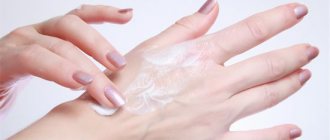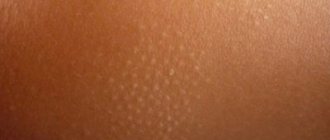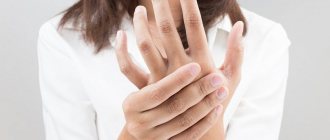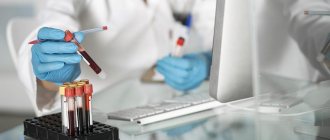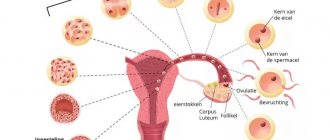A rash is a change in the appearance of the skin, its color, structure with localization of lesions on the face, scalp, arms, legs or, in severe cases, on the entire body.
The rash may be accompanied by itching, pain, the formation of red spots, bullae (blisters), papules (nodules), pustules (pustules), blisters, and plaques. The skin becomes dry, flaky, and when scratched, scratches, weeping, scabs or erosions may appear on the skin. Chronic itching and the addition of a secondary infection often provoke the development of foci of skin atrophy: changes in pigmentation, thinning or thickening of the skin.
The appearance of a rash may be accompanied by the following symptoms: itching, pain, fever, muscle and joint pain, headache, sleep disturbances, appetite, weight loss, general malaise, weakness, nausea and vomiting, inflammation and damage to the mucous membranes (eyes, cavities mouth, genitals).
The most common questions at a doctor’s appointment: allergic, infectious and acne rashes. It is important to understand that the cause of rashes is most often diseases - hair follicles and sebaceous glands, allergic reactions, infectious, autoimmune diseases. That is, the rash does not occur on its own, but is an external sign of pathological processes in the skin, internal organs and body systems.
Types of rash and causes of its appearance
The content of the article
A rash is a visual change in the structure and color of the skin; it is characterized by redness, itching, peeling and even pain. The halo of the rash, despite its external integrity, consists of individual elements, which include:
- ulcers (defects on the surface of the epidermis caused by slowing down the regenerative processes in the upper layers of the skin);
- erosion (superficial epithelial defect without scar formation)
- papule (dense nodule located above the surface of the skin);
- vesicle (a fluid-filled capsule located in the upper layers of the epidermis);
- pustule (a cavity formation on the surface of the skin filled with pus);
- blister (an element on the surface of the skin caused by inflammation and swelling of the papillary dermis);
- nodes (dense, painless nodules on the skin);
- hemorrhages (subcutaneous hemorrhages caused by high permeability of the vascular walls);
- petechiae (pinpoint subcutaneous hemorrhages caused by capillary injury);
- ulcers (deeply located formations filled with pus).
Depending on the location of the skin rash, the source of the problem can be determined. In particular:
- Allergic reactions cause a rash on the hands and face;
- Infections are characterized by rashes on the torso (abdomen, back);
- STIs are localized on the genitals, inner thighs and skin around the anus;
- Stress weakens the immune system, so the rash is localized throughout the body (but, unlike allergies or rashes due to infections, the reaction to allergens and immunoglobulin will be negative)%;
- Problems of the gastrointestinal tract are expressed in the form of serious skin abnormalities (with ulcerative colitis - erythema nodosum (inflammation of the subcutaneous tissue and blood vessels in the form of nodes), with problems with the pancreas - atopic dermatitis, intestinal infections provoke pyoderma - ulcers on the skin);
- Rashes due to problems with blood or blood vessels appear on the abdomen and then spread throughout the body. It is characterized by the absence of itching.
What type of rash is typical for allergies?
Allergy skin rashes are not caused by an immune reaction of the blood to allergic elements. This is due to haptens - simple chemical compounds that are not immunogenic. But they tend to bind to the carrier protein. Attaching to a macromolecule, the newly formed complex synthesizes immunoglobulins. The body perceives it as foreign, causing an increase in the level of leukocytes. As a result, the skin becomes covered with red spots of different sizes and different locations.
An allergic rash is characterized by the following characteristics:
- It does not always cause itching and fever;
- Accompanied by swelling of the face, eyelids, runny nose;
- The area of the rash corresponds to the places where the skin touches the allergen (if you are allergic to jewelry - on the wrist or fingers, to deodorant - in the armpits, to cosmetics - on the eyelids or around the mouth);
- A blood test shows an increase in the number of eosinophils;
- The biochemical blood test remains unchanged.
The most common form of allergy rash is hives. In appearance, it resembles pink spots that appear on the skin after contact with nettles. Hives are a reaction to pollen, cosmetics, and dust. Often localized on the bends of the elbows, knees and wrists. Accompanied by severe itching and peeling of the skin.
Depending on the allergen, the rash has the following types:
- Allergy to food . It is an erythematous rash in the form of rough spots rising above the surface of the epidermis. A characteristic feature of food allergies is severe itching.
- Cold allergy . Occurs when exposed areas of skin come into contact with cold (air, water). Although cold does not directly provoke an allergic reaction, it is a trigger for an allergic reaction to improper functioning of the thyroid gland, spleen, etc. Cold allergies are accompanied by lacrimation, nasal discharge, as well as the appearance of whitish and pink, scratch-like spots on the skin, which disappear on their own after some time. If a person has ever had an allergy to cold, he needs to see a doctor to find out the true cause of the malfunction of the body.
- Allergy (atopic dermatitis) to dust/animal hair . It is often diagnosed in children. It manifests itself in the form of an itchy rash, accompanied by increased dryness of the skin. In some cases there are weeping ulcers. The simplest test to identify atopic dermatitis: take an ordinary school ruler and press on the area of the rash for 20 seconds. If a white streak remains on the skin after a few minutes, it is atopic dermatitis. If the skin has regained its previous shade, this is a rash of a different nature.
- Allergy to alcohol . Alcohol has a vasodilating effect. Accordingly, more substances, including toxic ones, are absorbed into the blood. The more components in an alcoholic drink, the stronger the allergy to it. The most “dangerous” drink is absinthe, which contains wormwood, anise, fennel, coriander, and lemon balm. The skin becomes covered with red spots, as if from burns. In chronic alcoholics who drink cheap wine every day, a red, weather-beaten face is a consequence of constant alcohol intoxication of the body. If such a reaction occurs in an ordinary person, he needs to find out the source of the allergy and consult a doctor. The biggest danger is Quincke's edema, when the lungs swell and a person dies within a few minutes.
There are 4 types of allergic rashes: food, contact, respiratory and respiratory. The biggest allergy sufferers are children. It should be remembered that not all products consumed by adults are suitable for children.
A child’s rash should not be ignored. The most dangerous is the rash caused by meningococcal infection. Outwardly, it resembles a food allergy, but at the same time the body temperature rises. It’s better to be on the safe side, and if your baby has any rash, you should consult a doctor.
Treatment
It is not recommended to use drugs other than antihistamines on your own. In most cases, they are enough to eliminate the main symptoms and relieve swelling. It is necessary to take into account that the action must be comprehensive and must include creams, ointments and gels to relieve external signs of the disease.
Preparations for internal use
Medicines prescribed by a doctor are divided into corticosteroid and non-hormonal. The first are produced on a hormonal basis, have a powerful effect, but have a number of serious contraindications for long-term use. The second, milder ones, are prescribed to relieve mild forms of irritation. Several generations of antihistamines are available in pharmacies. If the former, such as Suprastin, influenced the level of attention, causing drowsiness and inhibition of reactions, then Cetrin, Telfast, Claritin, with high efficiency, do not give side effects that could become a limitation for work in areas where concentration is required.
Cosmeceuticals and their help in the fight against allergies
When the body reacts violently to a stimulus, skin lesions are sure to appear, and sometimes quite unpleasant ones. These are not only rashes and pimples, but also increased dryness and microcracks. Their danger lies in the possible entry of bacteria and the development of local inflammation. The main task, along with eliminating illness, is strengthening the immune system. Cosmetic products from the medical corporation "RHANA" are used in professional problem solving, provide a quick and lasting positive effect, allowing you to maintain beauty, health and prevent premature aging. And the skin is susceptible to it if an allergic reaction often appears on the face, a photo of which clearly demonstrates the degree of damage to the integument.
In order to give a fresh look and ensure cellular renewal, it is recommended to use placental preparations:
- Modeling mask with placenta hydrolyzate GHC Placental 3D Mask withQ10. It will prevent the risk of developing inflammation and give a healthy tone.
- Concentrate serum for intensive revitalization GHC Essence will instantly restore inner radiance, and also improve microcirculation and cell nutrition.
- LNC Repairing Cream with a moisturizing effect will preserve the beauty and freshness of the skin, and also protect it from moisture loss and eliminate the regeneration of ceramides (epidermal cells).
- Placental antioxidant lotion concentrate LNC Toning Lotion will protect cells, normalize melanin production and provide optimal hydration.
The dangers of self-medication
According to preliminary forecasts, the number of people reacting to certain stimuli will reach almost 90% by the end of the century. Allergists-immunologists mention the fault of allergy sufferers themselves, who, by self-medicating, expand the range of allergens and provoke the development of other diseases. In this case, the part is fixed and passed on by inheritance. By identifying the cause and drawing up an optimal treatment regimen, you can almost completely eliminate the likelihood of regular exacerbation of allergies.
Infectious rash: characteristic features and difference from allergic rashes
The distinctive features of an allergic rash are vesicles (capsules with liquid inside), papules (grain-like compactions) and pustules (bubbles with pus). An infectious rash has these symptoms.
Various infections and viruses entering the body damage, first of all, the mucous membrane, as well as the skin. Unlike an allergic rash, an infectious rash is always accompanied by an increase in body temperature.
Also characteristic signs of infection:
- body intoxication, vomiting, headache
- fast fatiguability
- phasing, spread of the rash to other parts of the body with each new day
- enlarged lymph nodes
- rashes look like papules, vesicles and pustules
- the skin dries out and flakes off.
The infection rash is not itchy, but touching it is painful. The causes of rashes are the following diseases:
- Herpes: depending on the type of virus, the skin of the face (lips) or the genitals (head of the penis, labia) are affected. The rash looks like blisters, which gradually open up and ulcers form in their place. Upon completion, a crust will form that should not be touched;
- Scabies: The causative agent is a microscopic mite that leaves tiny tunnels under the skin. Unbearable itching occurs;
- Chickenpox: The rash resembles a mosquito bite, filled with serous fluid. Vesicles spread throughout the body, including the scalp. The soles and palms remain intact;
- Scarlet fever: the rash looks like roseola - pinpoint pink spots of various shapes. After a few days, the rash fades and turns brownish. After the temperature normalizes, the skin peels and flakes. A characteristic feature is redness of the tongue and enlargement of the papillae;
- Measles: the rash looks like papules, which are localized on the inside of the cheeks and gums. The rash spreads from the neck down the back, lastly moving to the limbs. The mucous membrane of the eyes becomes inflamed;
- Rubella: the skin becomes covered with red spots, localized in the thighs and buttocks, and malaise is observed;
- Infectious mononucleosis: lymph nodes enlarge, adenoids swell. The rash is observed throughout the body, including on the roof of the mouth;
- Meningococcal infection: This is an extremely dangerous infection that can lead to the death or disability of a child. It is by the appearance of the rash that one can notice the symptoms of the disease on the first day of infection. A rash with meningococcal infection is a consequence of exposure to toxins caused by the activity of meningococcus, which increase vascular permeability. The rash is hemorrhagic in nature, that is, it looks like small hemorrhages. Mainly localized on the buttocks and limbs.
There is an effective test to distinguish meningococcal rash from other rashes. You need to take a glass, turn it over, press on the area of the rash and twist it a little until the skin around it turns white. If the skin turns pale at the site of the rash, then it is not a meningococcal infection. If the rash remains the same color, you should immediately call an ambulance.
Diagnosis of the symptom
In order to find out the cause of the itchy rash and choose the appropriate treatment, you should consult a physician or dermatologist. The specialist will conduct an initial examination and draw a conclusion based on several indicators.
- Quantitative characteristics of the rash. The rash can be represented by one lesion or several, the rash can be either scanty or abundant.
- Localization of rashes.
- Symmetry or asymmetry of skin reaction.
- Shape, size, color, outline and surface of the rash.
- Morphological type of rash (pustules, spots, papules, etc.)
- The general condition of the patient, the presence of other symptoms, for example, fever, enlarged lymph nodes, etc.
- Allergy history of the patient.
After the initial examination, the doctor may conduct a number of additional studies. This may include scraping, skin biopsy, bacteriological and virological tests.
Rash caused by diseases of the blood and blood vessels
A rash due to diseases of the blood or blood vessels is caused by damage to the walls of the capillaries, as a result of which petechiae - small bright red dots - appear on the surface of the skin. Unlike ordinary hemorrhages, a rash due to blood diseases does not change color when pressed. Other signs indicate the disease:
- joint pain (knees, ankles);
- black stools, diarrhea, sharp pain in the abdomen as if poisoned;
- the rash covers the entire body.
Diseases that cause hemorrhagic rash include:
Idiopathic thrombocytopenic purpura (Werlhof's disease) is a blood disease in which small arteries and capillaries are blocked by blood clots. Mainly found in children, especially newborns. The disease has autoimmune causes of unknown etymology. Those. Your own immune cells perceive platelets as a foreign body and attack them. The rash is painless, occurs as a reaction to the administration of any medication, and is localized at the injection site.
Hemoblastosis. This is a malignant tumor that occurs very often in childhood. The rash has several types:
- hemispheres of red-brown color, covered with a crust;
- blisters with serous fluid inside;
- rashes similar to bruises, both large in size and in the form of bloody dots that appear without any reason.
In all cases, the rash causes severe itching. Blood tests for hemoblastosis show a significant increase in the number of leukocytes due to decreased immunity. Hemoglobin drops, lymph nodes enlarge. Platelet counts drop and the child gets tired quickly. The main cause of rash in diseases of the blood or blood vessels is a decrease in the number of platelets and a disruption in the synthesis of proteins involved in blood clot formation. This rash also occurs when taking medications that thin the blood (Aspirin, Warfarin, Heparin).
Diabetic angiopathy. This is a violation of the vascular capacity of the lower extremities, provoked by type 1 and type 2 diabetes mellitus. Due to the disease, the walls of blood vessels become thinner and become fragile. This causes skin dystrophy. Ulcers and erosions appear on the skin.
Etiology of the symptom
The reasons for the appearance of rashes accompanied by severe itching can be different.
First of all, an itchy rash may be a manifestation of an allergic reaction. It can be triggered by plant pollen, animal hair, components of household chemicals and cosmetics, food, and some medications.
An itchy rash can also be caused by insect bites, such as ants, mosquitoes or bedbugs. A similar symptom also appears in skin diseases: eczema, scabies, dermatitis, prickly heat, lichen, etc. An itchy rash may also indicate an infectious disease, such as measles or herpes.
Sometimes an itchy rash occurs due to severe stress and chronic lack of sleep, indicating emotional stress. Finally, itchy rashes can occur as a reaction of the skin to sunlight.
Rash caused by digestive problems
The condition of the skin largely depends on the functioning of the internal organs. Using a map of rashes on the face, you can determine which organs have problems.
- pimples on the forehead indicate problems with the intestines;
- a rash along the hairline indicates problems with the gallbladder;
- pimples on the bridge of the nose - liver problems;
- ulcers on the temples - problems with the spleen;
- rashes above the lip - disruption of intestinal function;
- pimples on the nose - heart disease or endocrine disorders;
- rash on the chin - gynecological problems.
More about acne
Acne is caused by hormonal imbalance. If it is accompanied by improperly selected care, ideal conditions for the growth of bacteria are created. Microorganisms that cause acne are called propionic bacteria.
What should you do if acne appears? It is better to consult a cosmetologist or dermatologist for advice. It is worth reviewing your diet, eliminating sweets, fatty and spicy foods, and coffee. Food must be healthy and fresh, otherwise the problem will get worse.
Daily beauty care is of great importance. The algorithm for correct actions is as follows:
- Removing makeup at the end of the day is mandatory.
- Cleansing with lotion or foam for problem skin.
- Toning (very important for normalizing the functioning of the sebaceous glands and other processes that occur at the cellular level).
- Hydration.
When the seasons change, care is reviewed, and nutrition is added in winter if necessary. In summer, use products with a light formula.
Rashes due to liver diseases
In the early stages of liver disease, they practically do not manifest themselves at all. The earliest symptom is specific skin rashes. They are caused by an increase in the amount of bile acid in the blood, which causes general intoxication of the body. The skin takes on a yellowish tint.
With cholestasis (blockage of the bile ducts), the rash is localized on the feet and palms, looking like marks from a burn. With cirrhosis, liver cells die and the whole body becomes covered with spots. Parasitic liver diseases cause rashes resembling hives. They are localized in the lumbar region and abdomen.
Also characteristic is a combination of rash and spider veins, which cause severe itching, which intensifies at night. Taking antihistamines (allergy medications) does not provide relief. Increased bilirubin gives the skin a yellowish tint.
When you shouldn’t delay a visit to the doctor
Of course, an itchy rash may just be a manifestation of an allergy, and antihistamines and topical medications will help solve this problem. However, in some cases, a visit to the doctor should not be delayed, since rashes and itching may indicate serious pathological processes in the body.
Thus, medical consultation is mandatory if the rash and itching last longer than a week and the symptoms do not become less intense. You should not postpone a visit to the doctor if the discomfort caused by skin manifestations is so severe that it interferes with sleep, or if the disease gradually spreads, affecting healthy areas of the body.
You should seek immediate medical attention if the itchy rash is accompanied by fever, fatigue, changes in stool consistency, or if the rash appears in your household.
Rashes due to intestinal diseases
If the contents of the intestines are poorly removed from the body, then some of the toxins will begin to penetrate into the blood. The body begins to get rid of poisons itself through the excretory system. Because of this, the condition of the skin worsens, and it becomes characteristic of:
- increased fat content
- dull complexion
- acne, not only on the face, but also on the back, stomach, chest
- “black dots” are visible, similar to volcanic craters
- skin becomes dry and dehydrated
- After acne heals, scars remain.
After the New Year holidays, many people note a deterioration in their skin condition and notice minor rashes that go away on their own. They are associated with contamination of the body with toxins caused by eating large amounts of heavy food.
Nervous rash
Stress and nervous tension often cause skin rashes. Under the influence of a stressful situation, the immune system is suppressed. The body spends its resources to maintain the normal state of internal organs. For this reason, previously hidden diseases worsen. Also, weakened immunity provokes urticaria - a small rash similar to the reaction of the epidermis to the touch of nettles. This pathology is otherwise called nervous eczema. It, unlike a normal allergic reaction, is accompanied by the following symptoms:
- severe itching that is not relieved by antihistamines
- pulse quickens, hand tremors are felt
- restless sleep, night sweats
- panic attacks, feelings of anxiety and danger
- swelling of the face and limbs.
Typically, nervous eczema occurs after a traumatic situation or severe stress. Treating skin rashes with creams or medications does not help. Improvement comes only after the life situation normalizes. Itchy urticaria due to nervousness can be soothed by baths with sea salt, which also have a good effect on the nervous system.
Skin rashes due to gynecological problems
The condition of a woman’s reproductive organs is closely dependent on her hormonal levels. Many diseases (uterine fibroids, ovarian cysts, endometriosis) are caused by hormonal imbalance, in particular, the ratio of androgens (male sex hormones) and female sex hormones, which is primarily signaled by a specific rash on the skin. Androgens, particularly testosterone and DHT (dihydrotestosterone), are produced in women by the adrenal glands and testicles. The cells lining the sebaceous glands of the skin have androgen receptors. When the amount of hormones increases, the receptors react and the skin secretes more sebum, creating a nutritional base for bacteria. Moreover, DHT begins to be produced by the adrenal glands even before the onset of puberty, so in adolescents, especially girls, rashes have been observed since the age of 10-12.
When a woman has polycystic ovary syndrome, the amount of female hormones estrogen and progesterone decreases and the level of androgens increases sharply. Along with menstrual irregularities, a woman develops severe “teenage” acne on her face and chest. Darkening of the skin is noticeable in the groin, armpits and around the neck. The woman also notes increased hairiness on her legs, arms, and above her lip. All this is due to hormonal imbalance.
An increase in the level of female hormones also affects the condition of the skin. In addition to acne on the face and body, excess estrogen makes the skin dull and dull. She seems to be losing her tone. There is also a decrease in blood sugar levels and an increase in platelet counts.
The increase in progesterone also does not go away without leaving a trace. The skin has progesterone receptors, which respond to the growth of the hormone by increasing the production of sebum until the appearance of oily seborrhea. The scalp becomes covered with crusts, pink spots appear on the face and body, the skin on which flakes and flakes off. In adolescents, the face becomes covered with bumps, which, when pressed, release a liquid sebaceous secretion.
Babies also experience hormonal rashes, which can be very frightening for a new mother. This is the so-called neonatal cephalic pustulosis. It arises because the baby begins to live separately from the mother’s body, and for him this is a serious hormonal shock. The secretion of the sebaceous glands increases, the ducts become clogged, which creates favorable conditions for the activity of microbes.
Also, the newborn’s body gets rid of the hormones that its mother supplied it with during pregnancy. In addition to skin rashes, girls have swollen breasts and vaginal discharge. In boys, the scrotum and penis swell. All these symptoms go away on their own after a few days. The mother needs to make sure that the baby does not sweat and that bacteria do not multiply on the skin.
If you find an error, please select a piece of text and press Ctrl+Enter
